Settling of Spherical Particles in High Viscosity Friction Reducer Fracture Fluids
Abstract
:1. Introduction
2. Experiment Description
2.1. Experimental Materials
2.2. Spherical Particles Settling Description
2.2.1. Unconfined Fracture Model
2.2.2. Confined Fracture Model
2.3. Settling Velocity Procedure
3. Results and Analysis of Rheology Measurements
3.1. Viscosity Measurements
3.2. Temperature Effect on the HVFR Viscosity
3.3. Time-Dependent Temperature Effect on the HVFR Viscosity
3.4. Elasticity Measurements
3.5. Loss Factor or Damping Factor
4. Results and Analysis of the Spherical Particles Settling
4.1. Settling Particle Velocities into Unconfined Fracture Systems
4.2. Reynolds Number and Drag Coefficient Calculations
4.3. Settling Particle Velocities in Confined Fracture Systems
4.4. Fracture Width Effect
4.5. Particle Concentration Effect
4.6. Fracture Orientation Effect
5. Conclusions
- ➢
- The viscosity and elastic properties of HVFRs provided excellent efficiency to transport particles for a significant time, which can provide a better distribution of the proppant in fracture networks.
- ➢
- At a high shear rate, the viscosity of HVFRs decreased sharply, so the viscosity would not provide good sand transport, and the fracture fluid may depend on its elasticity to hold the proppant.
- ➢
- Increasing the temperature cut the friction reducer efficiency to suspend the spherical particles, and that was observed clearly at temperatures that reached 75 °C.
- ➢
- The settling velocity of the spherical particles in the unconfined model was faster than the settling velocity in the confined model due to the absence of interference by the fracture wall.
- ➢
- As the ratio of the spherical particle diameter to the fracture width increased, so did the wall effect; however, the wall effect can be reduced by increasing the HVFR concentration.
- ➢
- The fracture angulation had a large impact on the particle settling, where the spherical particles had more contact with the fracture wall at a lower fracture angulation of 45° compared to vertical positions (90°), which may cause a reduction in the settling rate of the spherical particles.
6. Future Work
- ➢
- The roughness of the surface of fracture walls has a significant impact on the settling velocity of particles where the smooth surface of the walls used in this current study could have the lowest impact on the particle settling velocity compared to roughened surfaces.
- ➢
- The effect of the temperature in this work was investigated only in rheology measurements. The settling velocity of spherical particles using a static model was measured at 25 °C, which has not been studied beyond this room temperature. Therefore, it is recommended to determine the particles settling at high-temperature ranges.
Author Contributions
Funding
Institutional Review Board Statement
Informed Consent Statement
Data Availability Statement
Acknowledgments
Conflicts of Interest
Abbreviations
| CD | Drag coefficient |
| DP | Spherical particle diameter, m |
| G′ | Storage modulus, Pa |
| G | Loss modulus, Pa |
| K | Flow consistency index, Pa.sn |
| n | Flow behavior index |
| RePL | Reynold’s number of proppants settling |
| Velocity in a power low liquid | |
| V | Setting proppant velocity, m/s |
| ρf | Fluid density, kg/m3 |
| μ | Viscosity, mPa·s |
| ω | Angular frequency, rad/s |
| Relaxation time of the friction reducer | |
| Fw | wall factor |
| Re | Reynold’s number |
| We | Weissenberg number |
| Settling velocity in viscoelastic fluids, m/s | |
| Settling velocity in inelastic fluids, m/s | |
| Dimensionless number relating the relaxation time to particle diameter and unconfined settling velocity |
References
- Acharya, A.; Mashelkar, R.A.; Ulbrecht, J. Flow of inelastic and viscoelastic fluids past a sphere. Rheol. Acta 1976, 15, 454–470. [Google Scholar] [CrossRef]
- Acharya, A.R. Particle Transport in Viscous and Viscoelastic Fracturing Fluids. SPE Prod. Eng. 1986, 1, 104–110. [Google Scholar] [CrossRef]
- Acharya, A.R. Viscoelasticity of Crosslinked Fracturing Fluids and Proppant Transport. SPE Prod. Eng. 1988, 3, 483–488. [Google Scholar] [CrossRef]
- Arnipally, S.K.; Kuru, E. Settling Velocity of Particles in Viscoelastic Fluids: A Comparison of the Shear-Viscosity and Elasticity Effects. SPE J. 2018, 23, 1689–1705. [Google Scholar] [CrossRef]
- Chhabra, R.P. Wall effects on spheres falling axially in cylindrical tubes. In Transport Processes in Bubbles, Drops and Particles, 2nd ed.; CRC press: Boca Raton, FL, USA, 2002. [Google Scholar]
- Chhabra, R. Bubbles Drops and Particles in Non-Newtonian Fluids Second Edition; CRC press: Boca Raton, FL, USA, 2007. [Google Scholar]
- Harris, P.C.; Walters, H.G.; E Bryant, J. Prediction of Proppant Transport From Rheological Data. SPE Prod. Oper. 2009, 24, 550–555. [Google Scholar] [CrossRef]
- Johnson, M.; Winkler, A.; Aften, C.; Sullivan, P.; Hill, W.A.; VanGilder, C. Successful Implementation of High Viscosity Friction Reducer in Marcellus Shale Stimulation. In Proceedings of the SPE/AAPG Eastern Regional Meeting, Pittsburgh, PA, USA, 7 October 2018. [Google Scholar] [CrossRef]
- Dahlgren, K.; Green, B.; Williams, B.; Inscore, J.; Van Domelen, M.; Fenton, A. Case Studies of High Viscosity Friction Reducers HVFR in the STACK Play. In Proceedings of the SPE Hydraulic Fracturing Technology Conference and Exhibition, The Woodlands, TX, USA, 23 January 2018. [Google Scholar] [CrossRef]
- White, C.M.; Mungal, M.G. Mechanics and Prediction of Turbulent Drag Reduction with Polymers. Ann. Rev Fluid Mech. 2008, 40, 235–256. [Google Scholar] [CrossRef]
- Sun, H.; Wood, B.; Stevens, R.F.; Cutler, J.; Qu, Q.; Lu, M. A Nondamaging Friction Reducer for Slickwater Frac Applications. Soc. Pet. Eng. 2011. [Google Scholar] [CrossRef]
- Tomson, R.C.; Guraieb, P.; Graham, S.; Yan, C.; Ghorbani, N.; Hanna, T.; Cooper, C. Development of a Universal Ranking for Friction Reducer Performance. Soc. Pet. Eng. 2017. [Google Scholar] [CrossRef]
- Khan, S.; Shen, L.; Everson, N. Engineered Friction Reducers Enhance Proppant Transport. E&P Magazine. Available online: https://www.hartenergy.com/exclusives/engineered-friction-reducers-enhance-proppant-transport-176821 (accessed on 2 January 2018).
- Sareen, A.; Zhou, M.J.; Zaghmoot, I.; Cruz, C.; Sun, H.; Qu, Q.; Li, L. Successful Slickwater Fracturing in Ultrahigh TDS Produced Water by Novel Environmentally Preferred Friction Reducer. In Proceedings of the International Petroleum Technology Conference, Kuala Lumpur, Malaysia, 10 December 2014. [Google Scholar] [CrossRef]
- Van Domelen, M.; Cutrer, W.; Collins, S.; Ruegamer, M. Applications of Viscosity-Building Friction Reducers as Fracturing Fluids. In Proceedings of the SPE Oklahoma City Oil and Gas Symposium, Oklahoma City, OK, USA, 27 March 2017. [Google Scholar] [CrossRef]
- Clark, R.K.; Scheuerman, R.F.; Rath, H.; Van Laar, H.G. Polyacrylamide/Potassium-Chloride Mud for Drilling Water-Sensitive Shales. Soc. Pet. Eng. 1976, 28, 719–727. [Google Scholar] [CrossRef]
- Ryles, R.; Cicchiello, J. New Polymers for EOR Applications. In Proceedings of the SPE Enhanced Oil Recovery Symposium, Tulsa, OK, USA, 20 April 1986. [Google Scholar] [CrossRef]
- Blamble, E.A.; Pyncheon, J. Guar Replacement with Synthetic Polymers—Utica Shale Case Histories. In Proceedings of the SPE International Conference and Exhibition on Formation Damage Control, Lafayette, LA, USA, 24 February 2016. [Google Scholar] [CrossRef]
- Aften, C. Analysis of Various High Viscosity Friction Reducers and Brine Ranges Effectiveness on Proppant Transport. In Proceedings of the SPE/AAPG Eastern Regional Meeting, Pittsburgh, PA, USA, 7–11 October 2018. [Google Scholar] [CrossRef]
- Geri, M.B.; Imqam, A.; Bogdan, A.; Shen, L. Investigate The Rheological Behavior of High Viscosity Friction Reducer Fracture Fluid and Its Impact on Proppant Static Settling Velocity. In Proceedings of the SPE Oklahoma City Oil and Gas Symposium, Oklahoma City, OK, USA, 8 April 2019. [Google Scholar] [CrossRef]
- Kurdi, M.; Sadykov, A.; Momin, A.; Rueda, J.; Kazakoff, S.; Baki, S.; Mechkak, K.; Kalbani, A. Application of High Viscous Friction Reducers in Saudi Unconventional Reservoirs. In Proceedings of the International Petroleum Technology Conference, Dhahran, Saudi Arabia, 13 January 2020. [Google Scholar] [CrossRef]
- Zhao, H.; Danican, S.; Torres, H.; Christanti, Y.; Nikolaev, M.; Makarychev-Mikhailov, S.; Bonnell, A. Viscous Slickwater as Enabler for Improved Hydraulic Fracturing Design in Unconventional Reservoirs. In Proceedings of the SPE Annual Technical Conference and Exhibition, Dallas, TX, USA, 24 September 2018. [Google Scholar] [CrossRef]
- Ghith, B.; Imqam, A. Proppant Transport by High Viscosity Friction Reducer and Guar Linear Gel-Based Fracture Fluids. In Proceedings of the 54th U.S. Rock Mechanics/Geomechanics Symposium, Physical Event Cancelled, Golden, CO, USA, 28 June 2020. [Google Scholar]
- Geri, M.B.; Imqam, A.; Shen, L.; Bogdan, A.; Flori, R. Static Proppant Settling Velocity Characteristics in High Viscosity Friction Reducers Fluids for Unconfined and Confined Fractures. In Proceedings of the 53rd U.S. Rock Mechanics/Geomechanics Symposium, New York, NY, USA, 23 June 2019. [Google Scholar]
- Shen, L.; Vigderman, L.; Heller, D.; Fu, D. Can Friction Reducers Transport Sand During Fracturing Treatment? In Proceedings of the SPE/AAPG/SEG Unconventional Resources Technology Conference, Houston, TX, USA, 23 July 2018. [Google Scholar] [CrossRef]
- Kadhim, D.A.; Dunn-Norman, S.; Imqam, A. Ceramic Proppant Transport and Placement in Heterogeneous Fracture Systems. In Proceedings of the SPE/AAPG/SEG Unconventional Resources Technology Conference, Austin, TX, USA, 24 July 2017. [Google Scholar] [CrossRef]
- Hu, Y.T.; Fisher, D.; Kurian, P.; Calaway, R. Proppant Transport by a High Viscosity Friction Reducer. In Proceedings of the SPE Hydraulic Fracturing Technology Conference and Exhibition, The Woodlands, TX, USA, 23 January 2018. [Google Scholar] [CrossRef]
- Sanders, M.; Felling, K.; Thomson, S.; Wright, S.; Thorpe, R. Dry Polyacrylamide Friction Reducer: Not Just for Slick Water. In Proceedings of the SPE Hydraulic Fracturing Technology Conference, The Woodlands, TX, USA, 1 February 2016. [Google Scholar] [CrossRef]
- Swiecinski, F.; Reed, P.; Andrews, W. The Thermal Stability of Polyacrylamides in EOR Applications. In Proceedings of the SPE Improved Oil Recovery Conference, Tulsa, OK, USA, 11 April 2016. [Google Scholar] [CrossRef]
- Almubarak, T.; Ng, J.H.; Sokhanvarian, K.; AlKhaldi, M.; Nasr-El-Din, H. Improving Hydraulic Fracturing Fluids Through Dual Polymer Technology. In Proceedings of the SPE Annual Technical Conference and Exhibition, Dallas, TX, USA, 24 September 2018. [Google Scholar] [CrossRef]
- Gautam, S.; Guria, C. Optimal Synthesis, Characterization, and Performance Evaluation of High-Pressure High-Temperature Polymer-Based Drilling Fluid: The Effect of Viscoelasticity on Cutting Transport, Filtration Loss, and Lubricity. SPE J. 2020, 25, 1333–1350. [Google Scholar] [CrossRef]
- Geri, M.B.; Ellafi, A.; Ofori, B.; Flori, R.; Sherif, H. Successful Implementation of High Viscosity Friction Reducers from Laboratory to Field Scale: Middle Bakken Case Study. In Proceedings of the SPE/AAPG/SEG Unconventional Resources Technology Conference, Denver, CO, USA, 22 July 2019. [Google Scholar] [CrossRef]
- Chhabra, R.P. Bubbles, Drops, and Particles in Non-Newtonian Fluids; CRC press: Boca Raton, FL, USA, 2006. [Google Scholar]
- Morrison, F.A. Data Correlation for Drag Coefficient for Sphere; Department of Chemical Engineering, Michigan Technological University: Houghton, MI, USA, 2013; p. 49931. [Google Scholar]
- Malhotra, S.; Sharma, M.M. Settling of spherical particles in unbounded and confined surfactant-based shear thinning viscoelastic fluids: An experimental study. Chem. Eng. Sci. 2012, 84, 646–655. [Google Scholar] [CrossRef]
- McMechan, D.; Shah, S. Static Proppant-Settling Characteristics of Non-Newtonian Fracturing Fluids in a Large-Scale Test Model. Soc. Pet. Eng. 1991, 6, 305–312. [Google Scholar] [CrossRef]
- Ellafi, A.; Jabbari, H.; Geri, M.B.; Alkamil, E. Can HVFRs Increase the Oil Recovery in Hydraulic Fractures Applications? In Proceedings of the Abu Dhabi International Petroleum Exhibition & Conference, Abu Dhabi, UAE, 11 November 2019. [Google Scholar] [CrossRef]
- Xiao, B.; Huang, Q.; Chen, H.; Chen, X.; Long, G. A fractal model for capillary flow through a single tortuous capillary with roughened surfaces in fibrous porous media. Fractals 2021, 29, 2150017. [Google Scholar] [CrossRef]
- Xiao, B.; Liu, Y.; Chen, H.; Chen, X.; Long, G. A Novel Fractal Solution for Laminar Flow Resistance in Roughened Cylindrical Microchannels. Fractals 2020, 28, 2050097. [Google Scholar] [CrossRef]
- Kou, R.; Moridis, G.J.; Blasingame, T. Field Scale Proppant Transport Simulation and Its Application to Optimize Stimulation Strategy. In Proceedings of the SPE/AAPG/SEG Unconventional Resources Technology Conference, Houston, TX, USA, 23 July 2018. [Google Scholar] [CrossRef] [Green Version]
- Geri, M.B.; Imqam, A.; Dunn-Norman, S. Proppant Transport Behavior in Inclined Versus Vertical Hydraulic Fractures: An Experimental Study. In Proceedings of the SPE/AAPG Eastern Regional Meeting, Pittsburgh, PA, USA, 7 October 2018. [Google Scholar] [CrossRef]
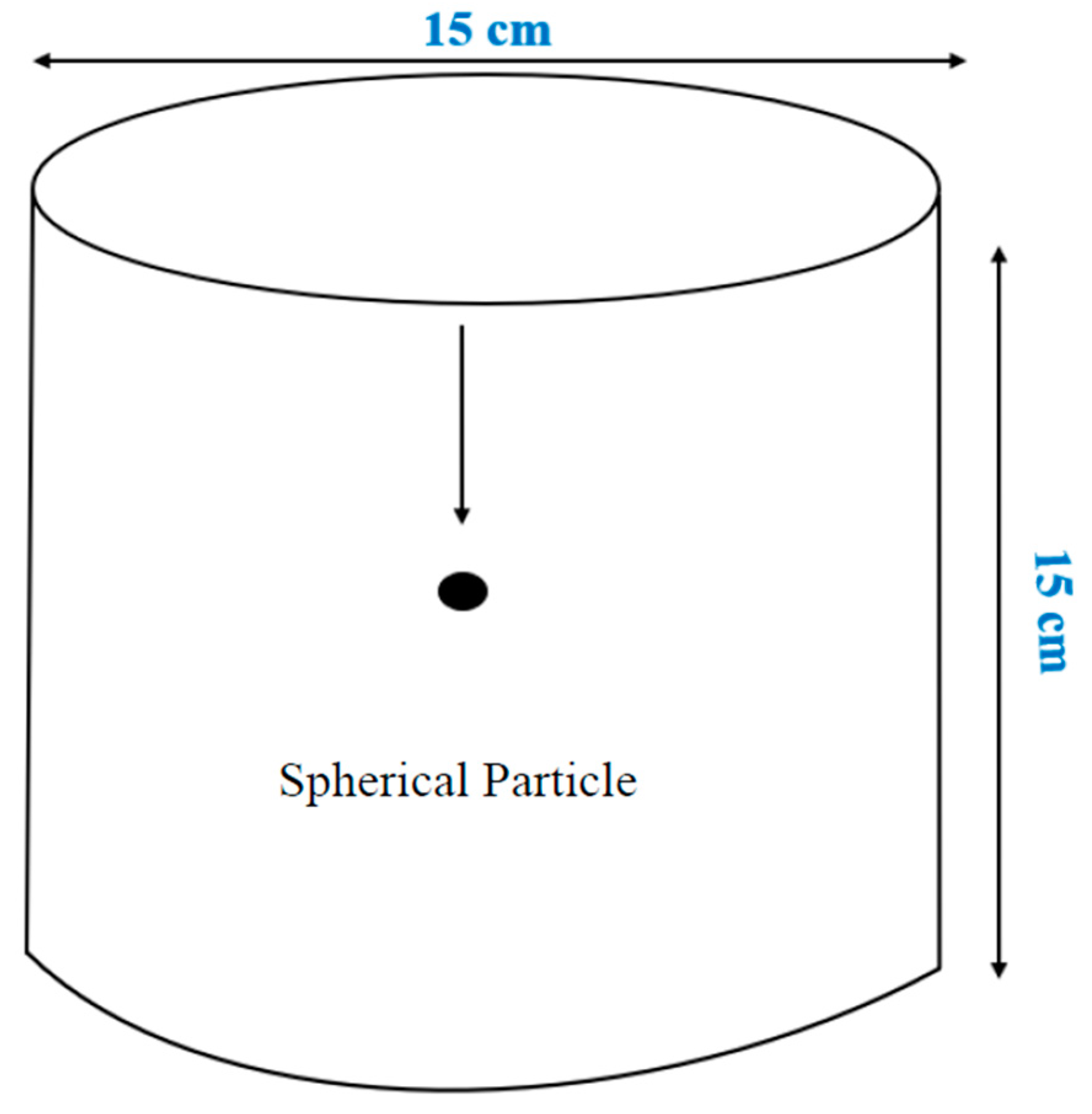
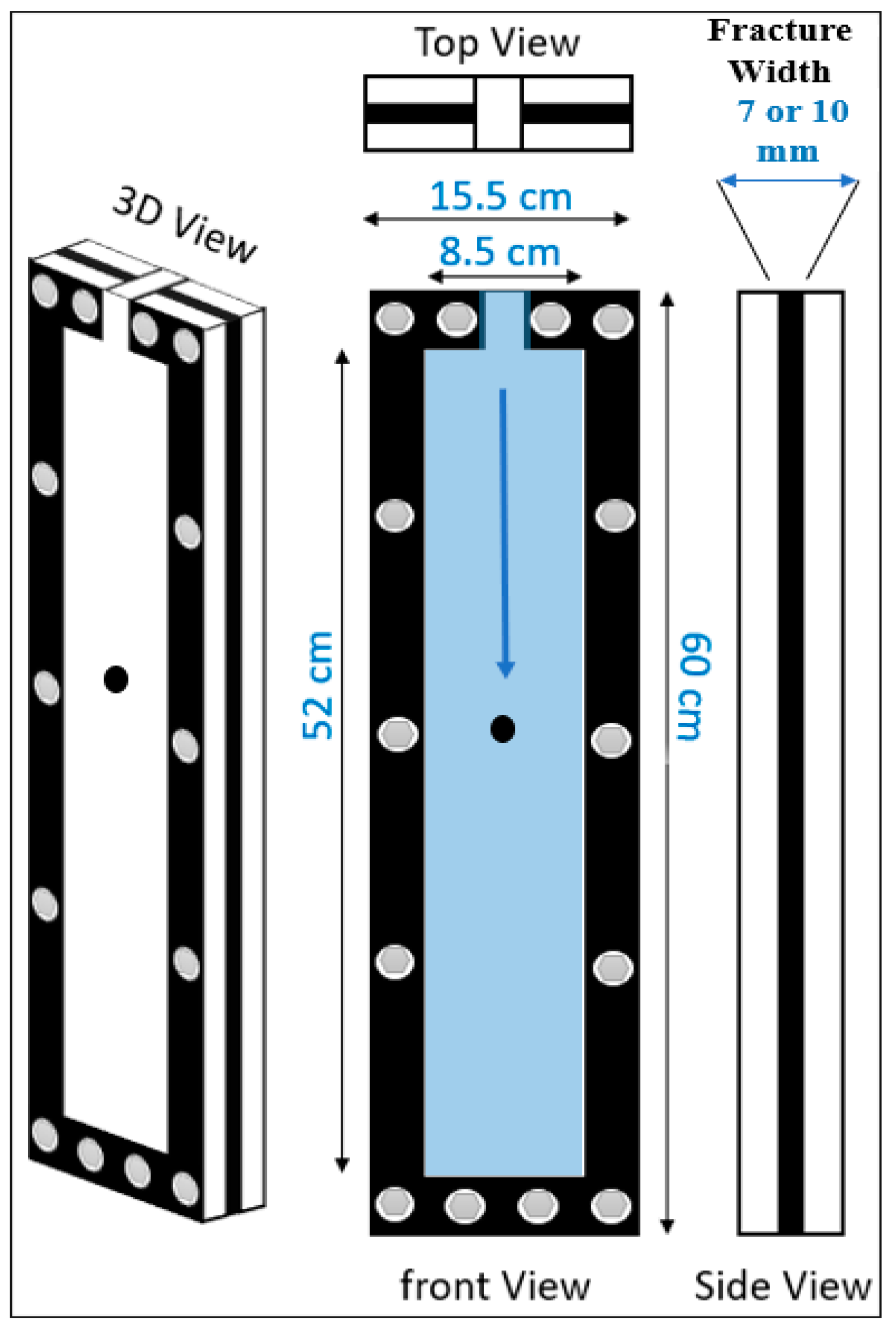

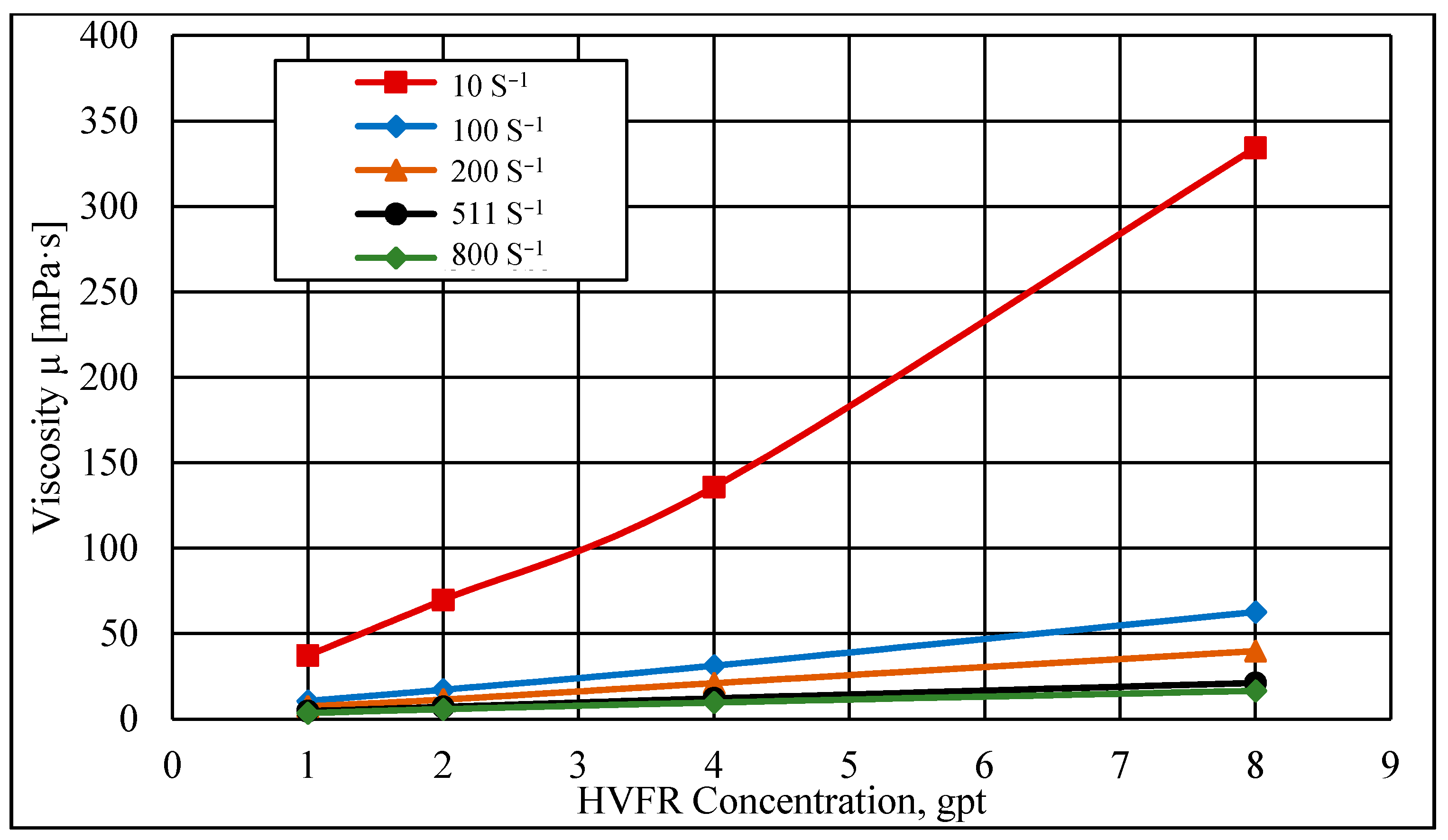
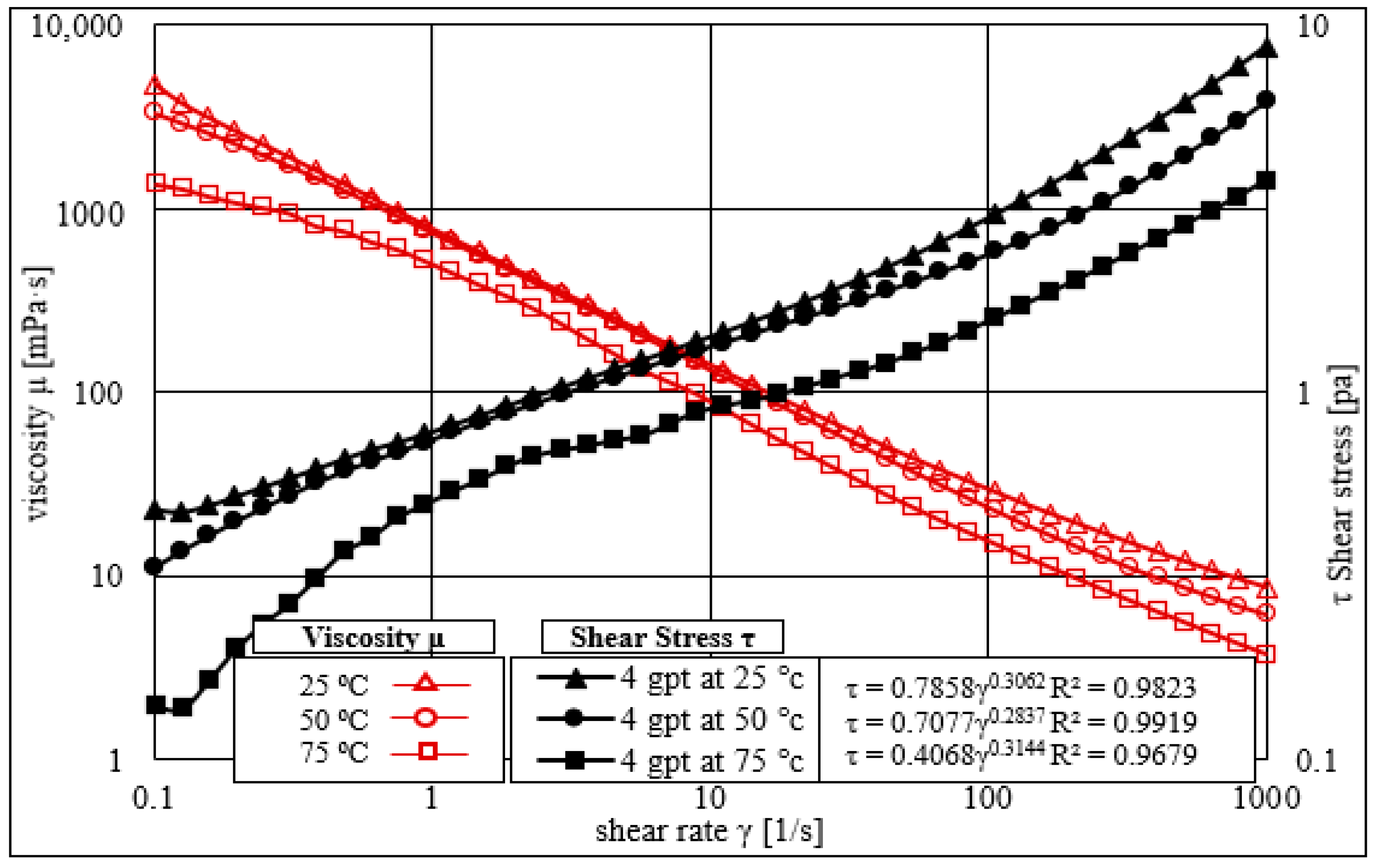
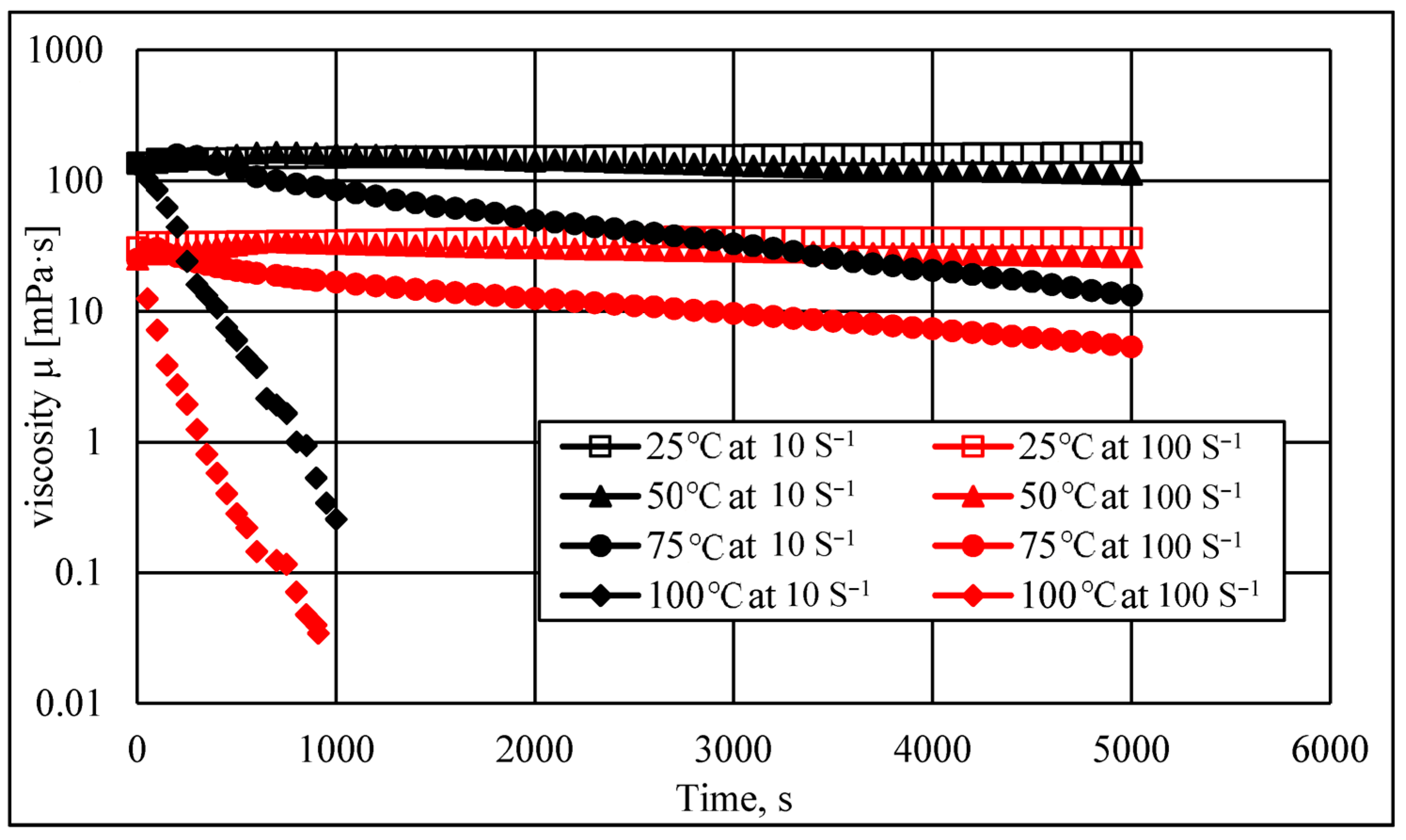

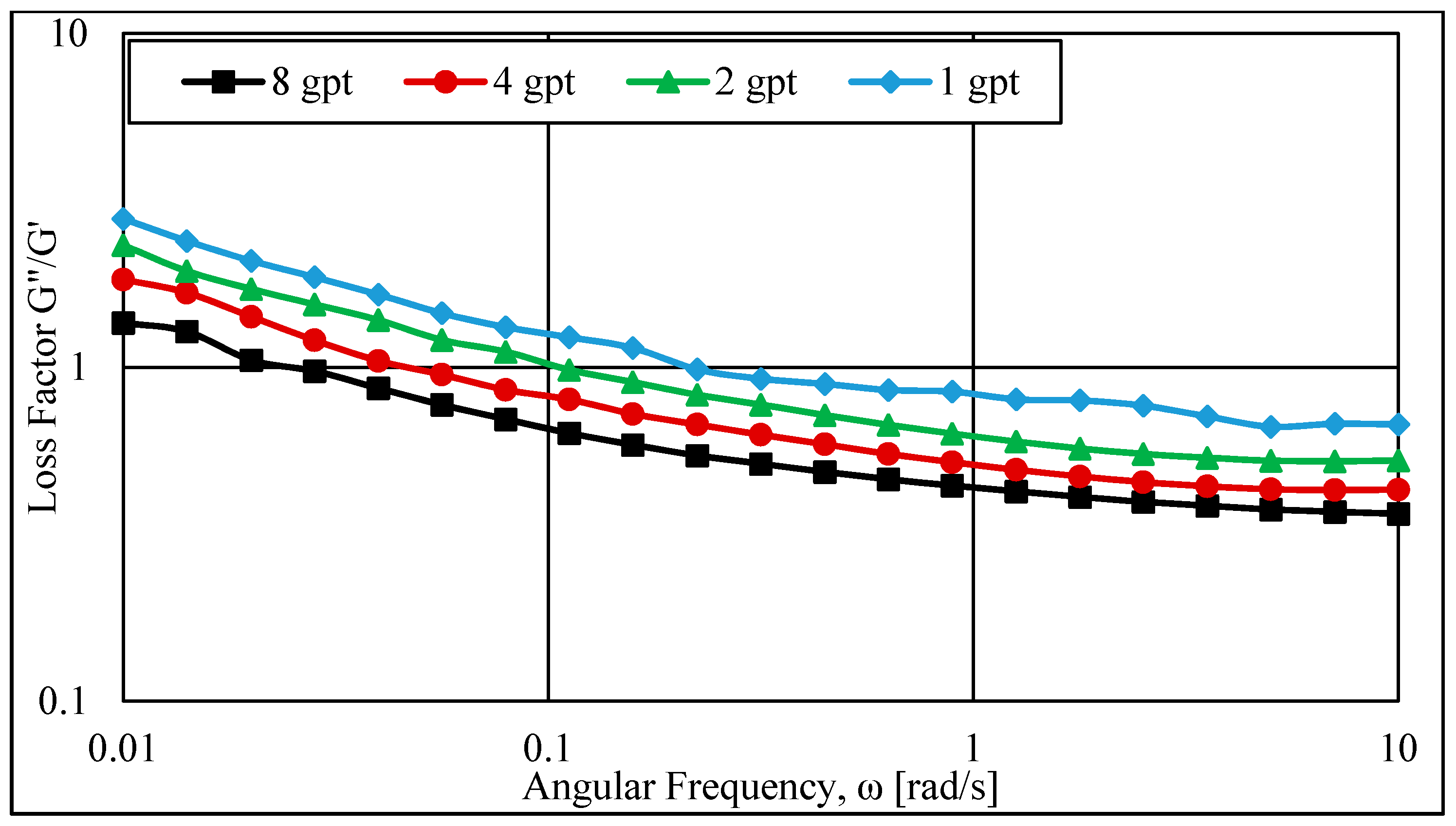
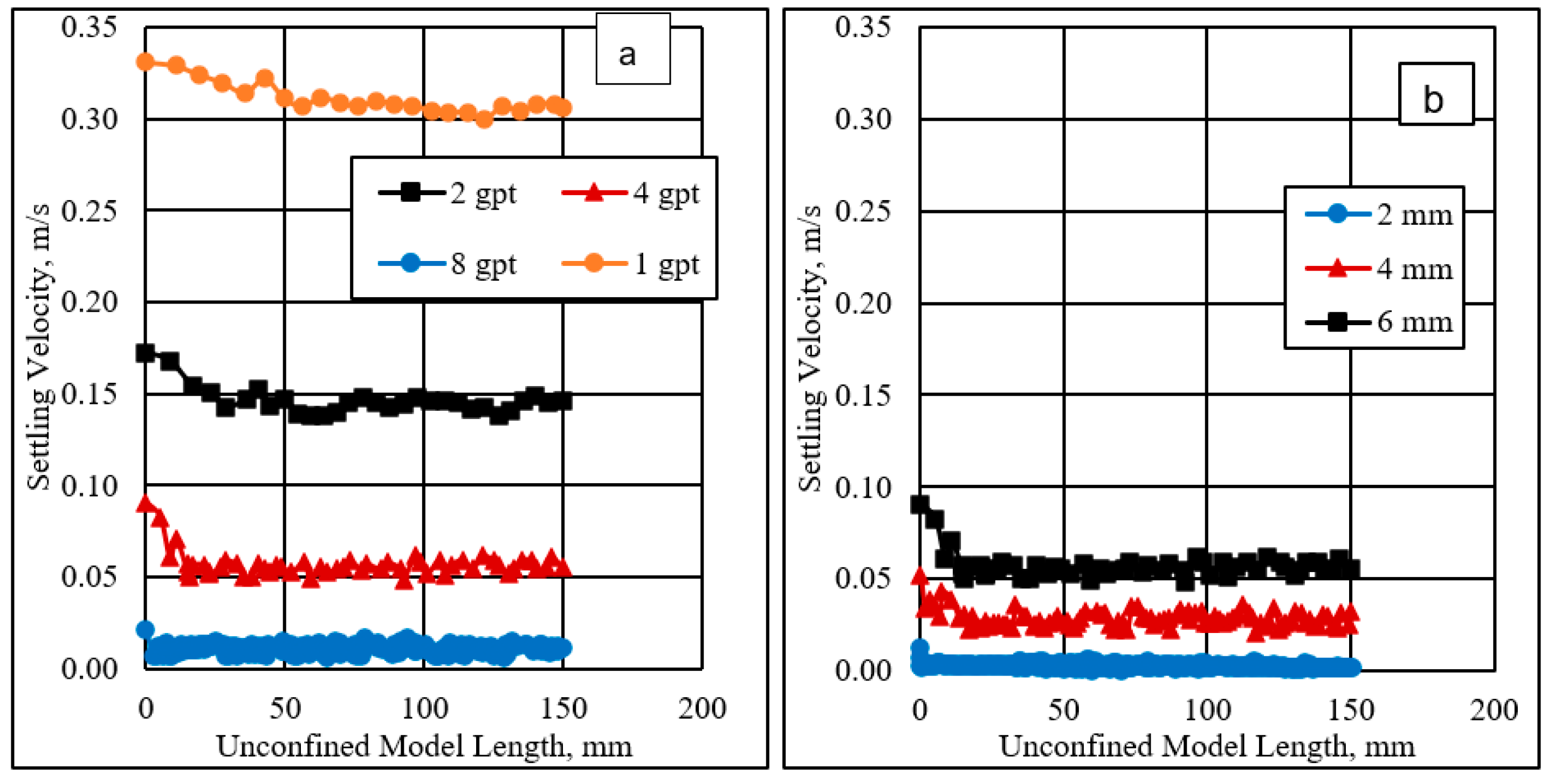


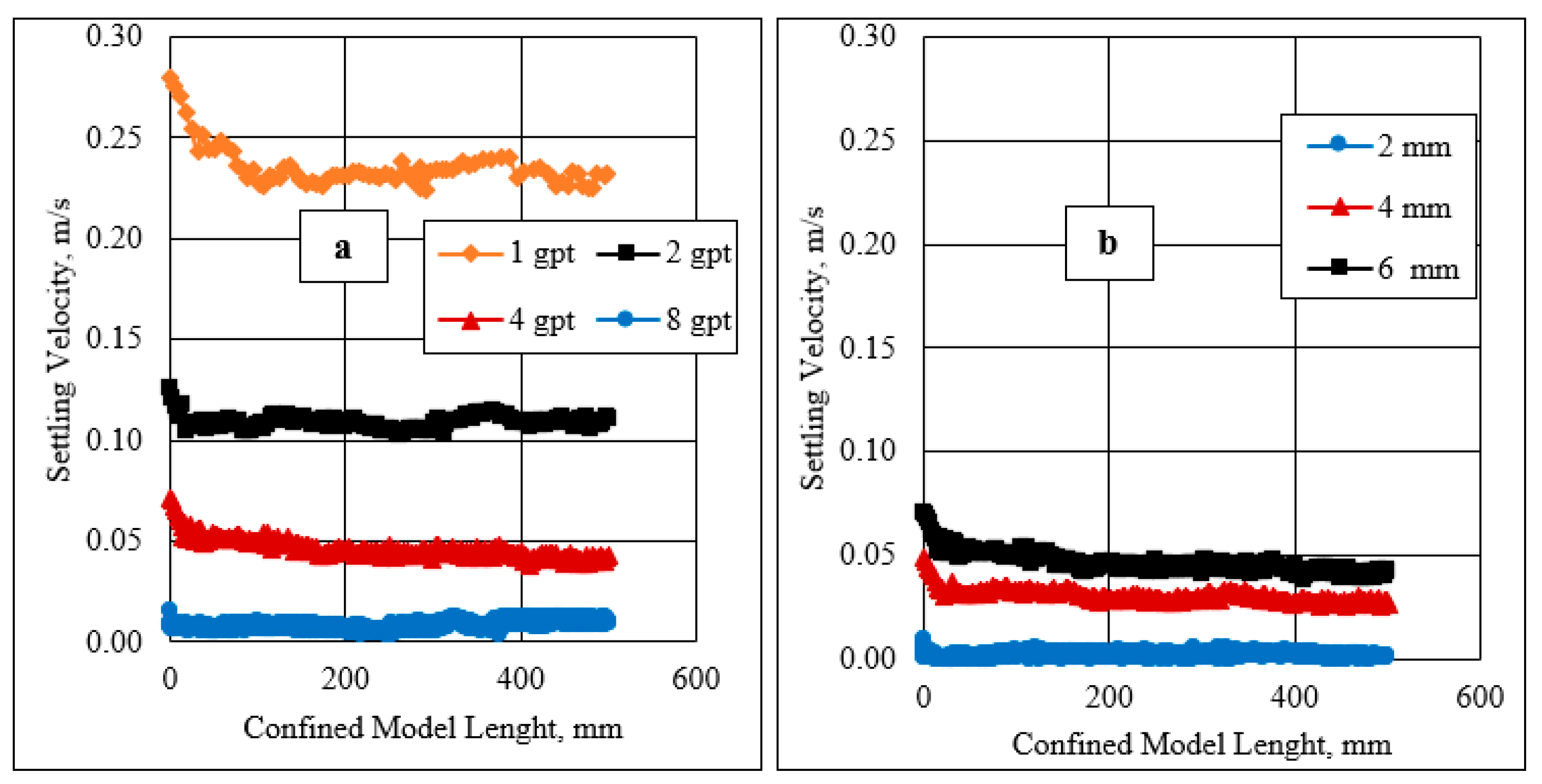
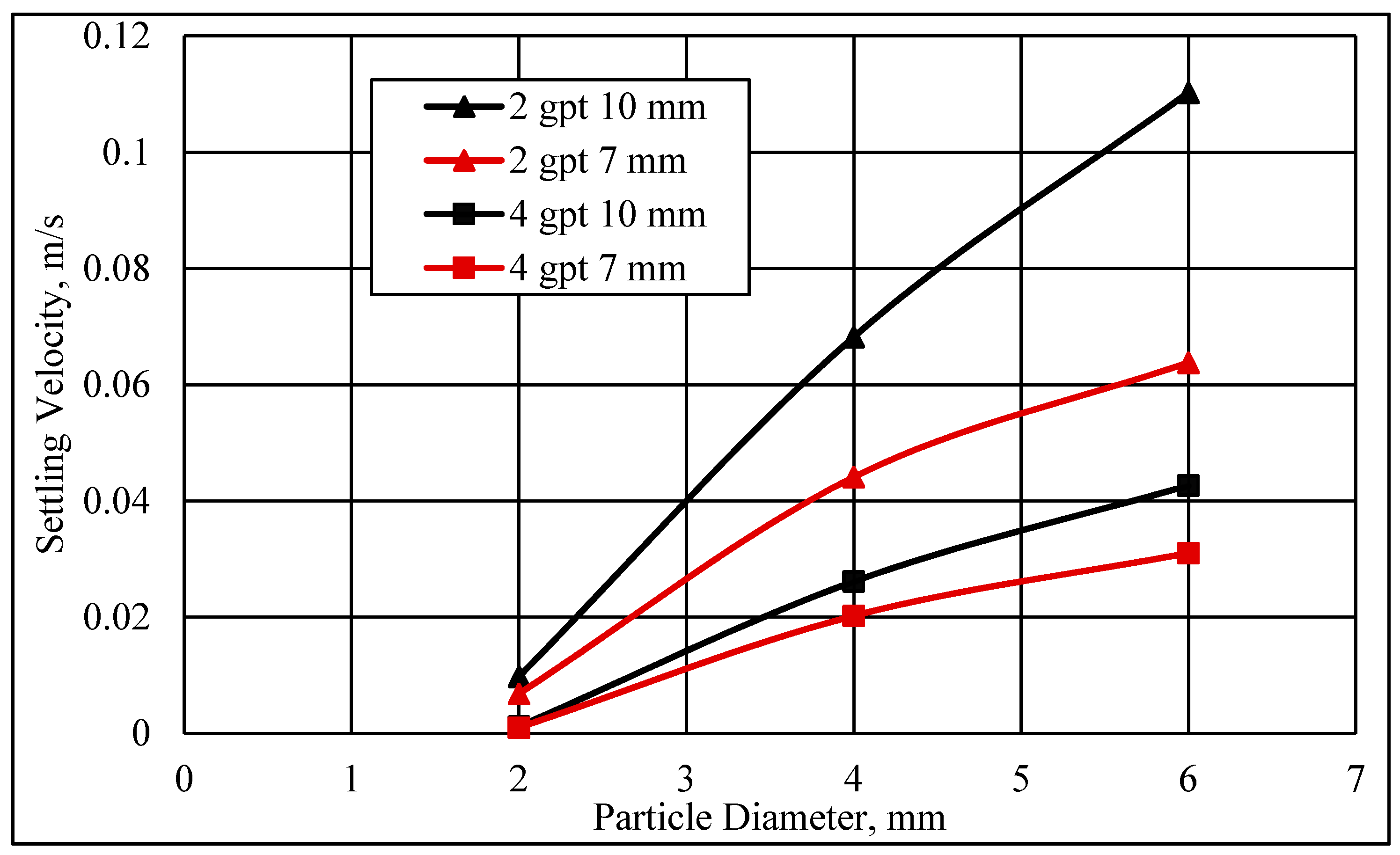
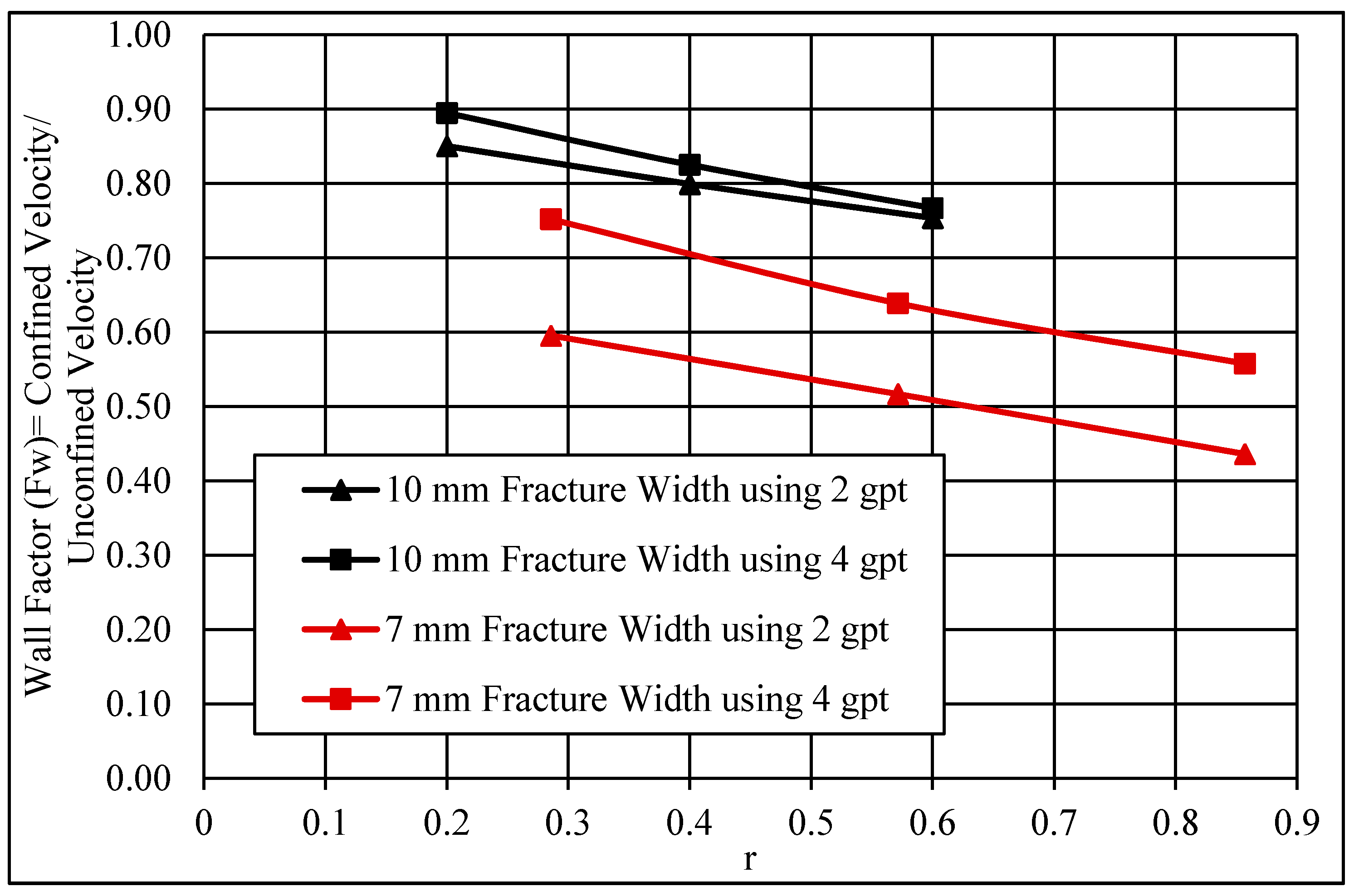
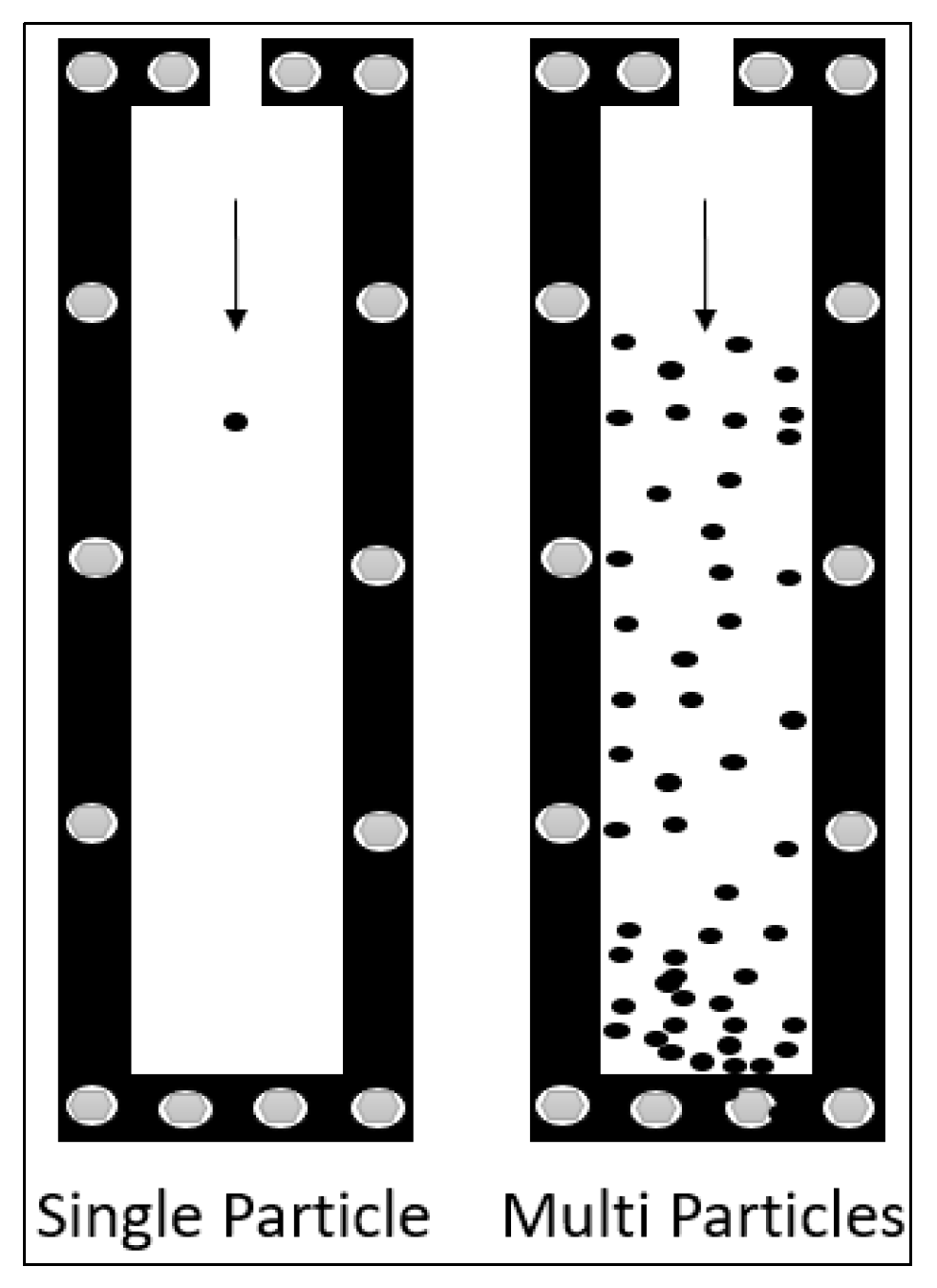

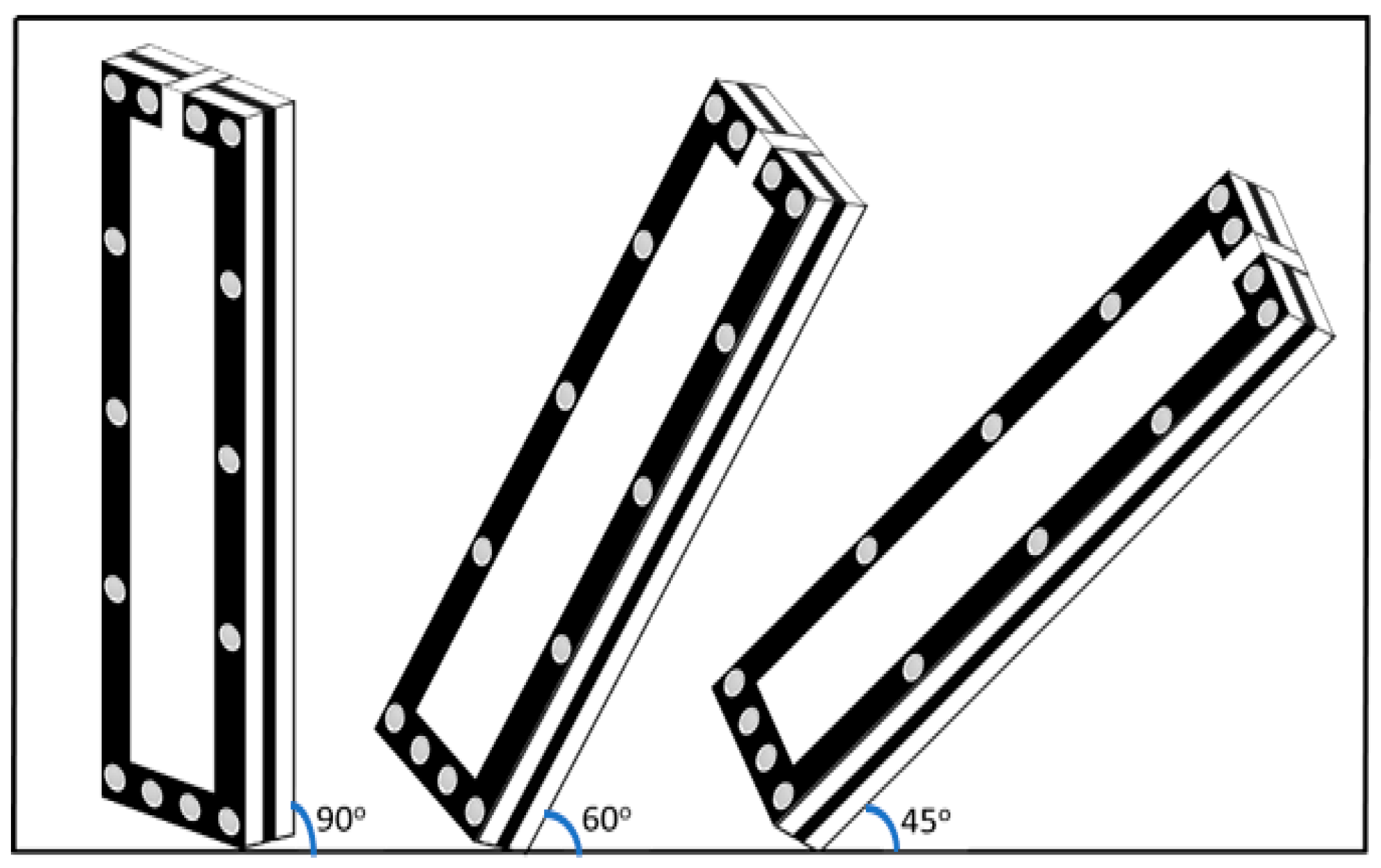
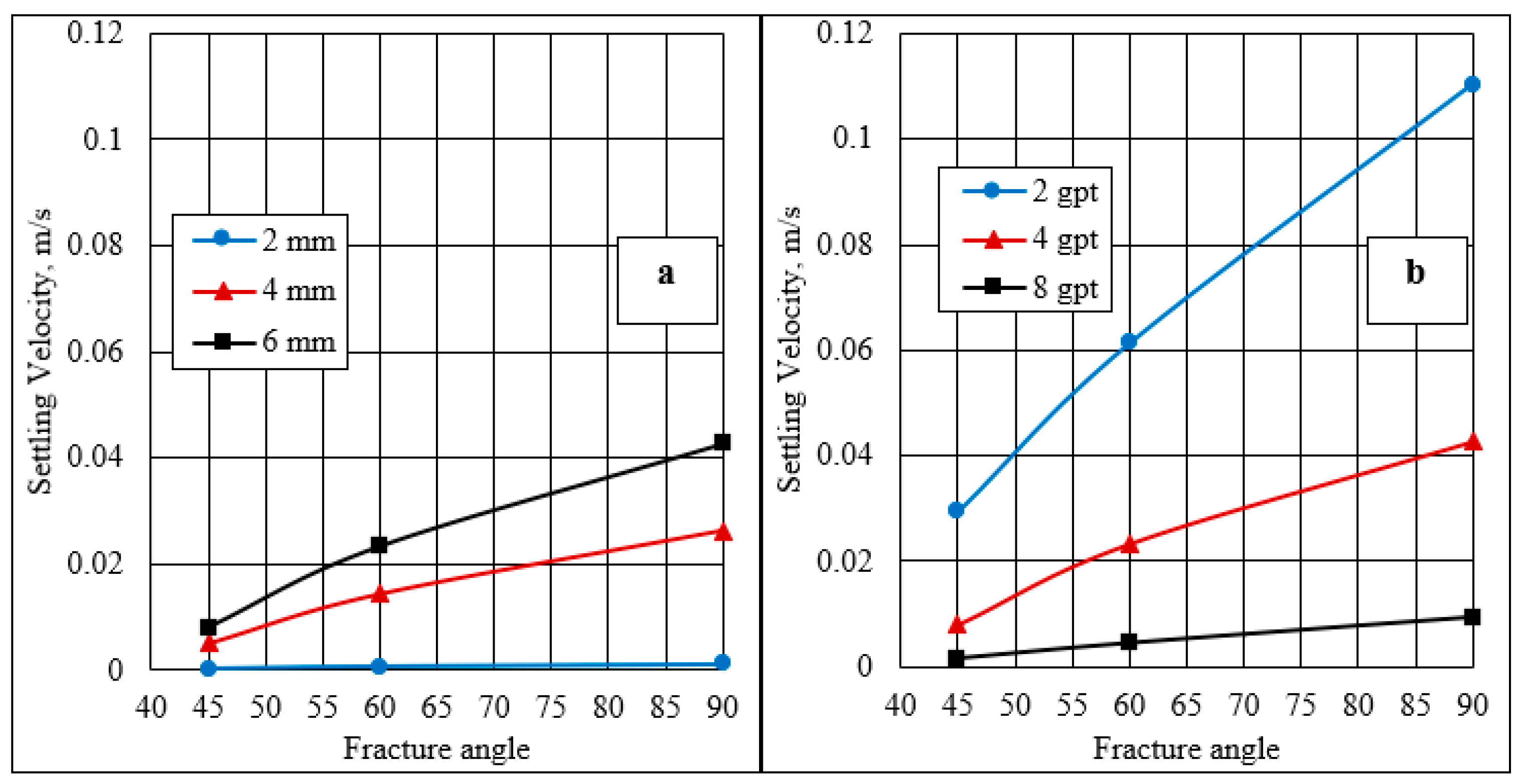
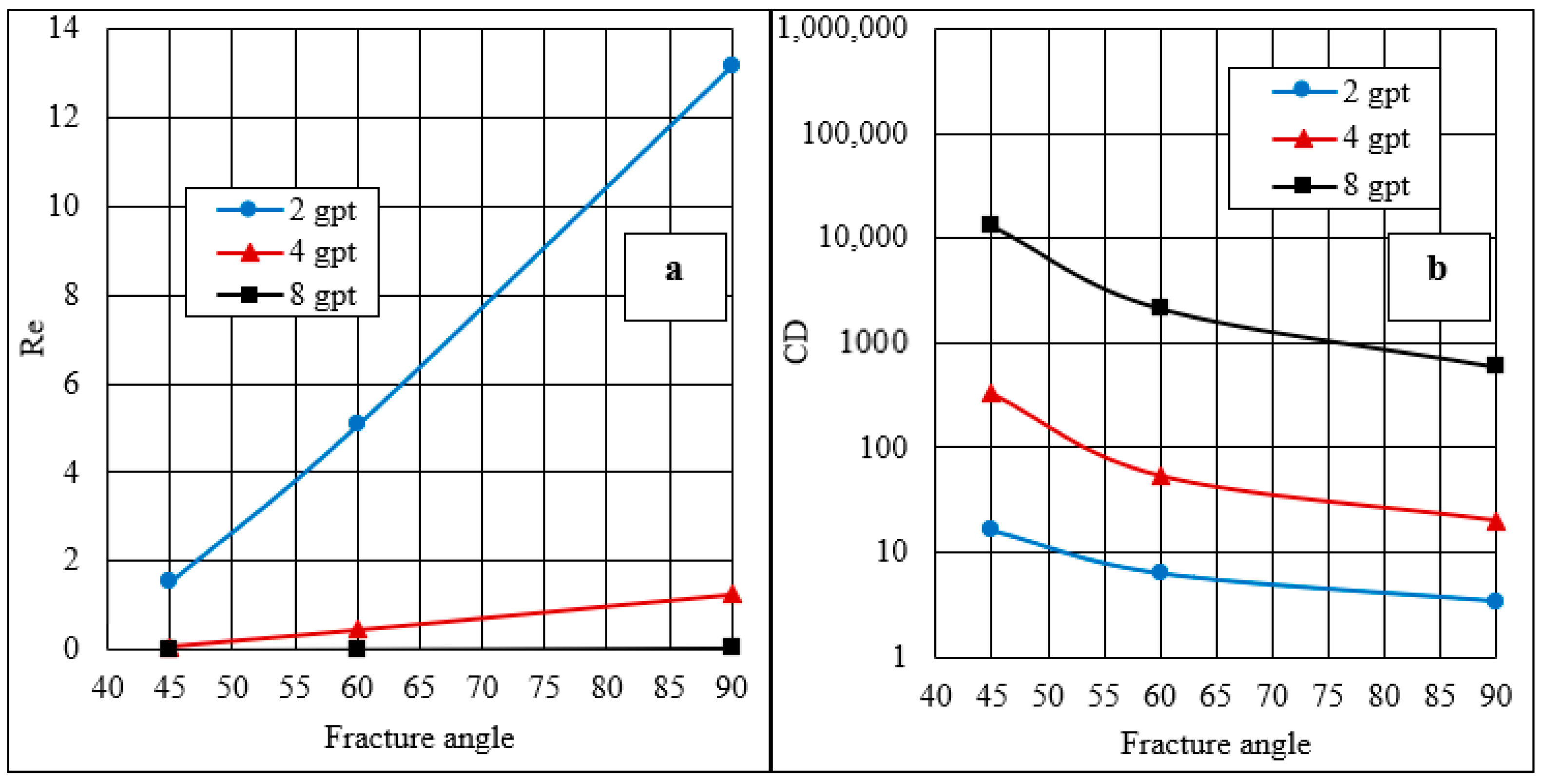
| Glass Bubble Diameter, mm | Density, g/cm3 |
|---|---|
| 2 | 2.6253 |
| 4 | 2.6261 |
| 6 | 2.626 |
| Fluid Concentration, gpt | Fluid Density, g/cm3 | Relaxation Time, s | Consistency Index, k | Flow Behavior Index, n | R2 |
|---|---|---|---|---|---|
| 1 | 0.996 | 4.464 | 0.1125 | 0.4916 | 0.9968 |
| 2 | 0.997 | 9.346 | 0.3077 | 0.3772 | 0.9929 |
| 4 | 0.997 | 21.322 | 0.7858 | 0.3062 | 0.9823 |
| 8 | 0.998 | 39.8406 | 1.9291 | 0.2601 | 0.9883 |
Publisher’s Note: MDPI stays neutral with regard to jurisdictional claims in published maps and institutional affiliations. |
© 2021 by the authors. Licensee MDPI, Basel, Switzerland. This article is an open access article distributed under the terms and conditions of the Creative Commons Attribution (CC BY) license (https://creativecommons.org/licenses/by/4.0/).
Share and Cite
Biheri, G.; Imqam, A. Settling of Spherical Particles in High Viscosity Friction Reducer Fracture Fluids. Energies 2021, 14, 2462. https://doi.org/10.3390/en14092462
Biheri G, Imqam A. Settling of Spherical Particles in High Viscosity Friction Reducer Fracture Fluids. Energies. 2021; 14(9):2462. https://doi.org/10.3390/en14092462
Chicago/Turabian StyleBiheri, Ghith, and Abdulmohsin Imqam. 2021. "Settling of Spherical Particles in High Viscosity Friction Reducer Fracture Fluids" Energies 14, no. 9: 2462. https://doi.org/10.3390/en14092462







